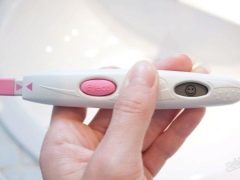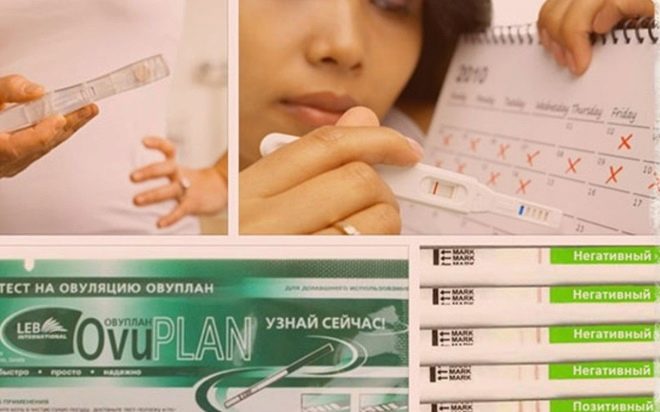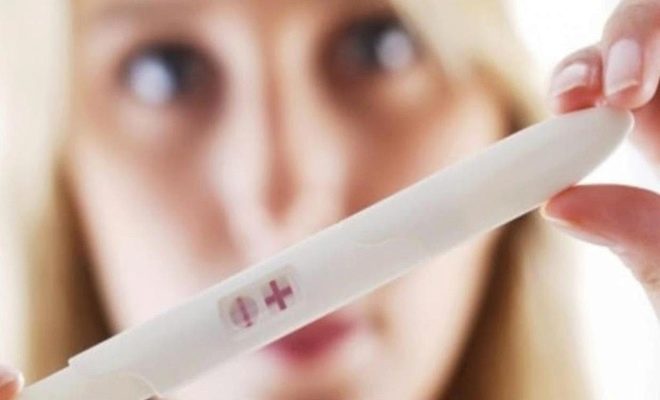Can an ovulation test show pregnancy?
Despite the fact that the XIX century and almost any information on many issues of interest is freely available, the question of whether an ovulation test can show a pregnancy remains one of the most common. Many women are sure that this is quite possible. Is it so, we answer in this article.
How does the test work?
On ovulation
Before talking about whether the ovulation test system shows an “interesting” situation, it is worthwhile to understand, and what, in fact, is the similarity and difference between pregnancy tests and similar ovulation systems.
Test systems for determining ovulation (the period of the release of a mature egg from the follicle) are designed for planning pregnancy and contraception.
They allow a woman to better understand the boundaries of her fertile window - the period when the probability of conception is maximum.
The process of ovulation in a woman’s body is accompanied and regulated by a certain hormonal support, without which neither ovulation nor menstruation would simply occur. In the first half of the menstrual cycle, a large amount of estrogen is produced, blocking the production of progesterone. Under the action of follicle-stimulating hormone (FSH), maturation and increase in size of the dominant follicle occurs, from which an egg cell ready for fertilization should appear on the desired day.
The desired day is determined by the concentration of another hormone - LH (luteinizing). The peak concentration of this substance falls on the period immediately before ovulation.
All of these substances accumulate in the blood, and therefore can be determined by laboratory blood tests. But for ease of diagnosis today, so-called home-ovulation tests are widespread.
They are different - from strip strips for immersion in the urine to expensive electronic mini-microscopes for diagnosing salivary fluid and vaginal secretions. The second strip of these systems (strip, cassette) respond to the presence in the woman's urine of a sufficient amount of the concentration of luteinizing hormone (LH). In this way, two strips on the ovulation test - a sign of the approaching responsible period, when the conception of the baby is most likely.
Mini-microscopes do not respond to LH, but to estrogen levels. With its high concentration (the peak also falls on the period before ovulation), the saliva crystallizes on drying by a certain pattern resembling fern leaves.
After the end of the fertile period, test systems for ovulation usually show negative results again.
The second strip on the ovulation test systems appears in the zone where the reagent is sensitive to the luteinizing hormone. Actually, the fact that there is a second strip is the only similarity between the ovulation test and a similar device for determining pregnancy. Two strips - the result is positive. The principle of operation is also almost identical, but the reagents and goals are different.
For pregnancy
Well-known test strips, as well as electronic devices that allow you to answer the question of whether a woman is pregnant or not, also respond to a hormone, but to a completely different system than ovulation.
After conception, the embryo, without ceasing to break up, descends into the uterine cavity, where in about a week it is implanted into the uterine wall. The villi of the chorion, with which the embryo sinks into the endometrial tissue, immediately begin to produce a special hormone - hCG (human chorionic gonadotropic hormone). The concentration of this substance in the blood of a woman doubles every two days.
The hormone is needed by the body of the future mother and baby, because it allows you to maintain a consistently high level of progesterone, which ensures the viability of the embryo, its nutrition, the creation of optimal conditions for its growth and development. Peak values of hCG reaches 12 weeks of pregnancy, and then begins to gradually decline.
As the hormone level increases gradually, it begins to be detected in the woman’s urine at the beginning of the delay, or even in the first days after it. (in blood - earlier, on which, in fact, a blood test for hCG is based). Pregnancy test systems are strips with a hCG sensitive test area.
If the concentration of human chorionic gonadotropin exceeds the level of sensitivity of the test, a clear second line appears, which gives the right to say that the woman is pregnant.
What exactly show a successful conception?
As the name implies, pregnancy is shown with high accuracy by a system that has a sensitive area specifically for chorionic gonadotropin, that is, a pregnancy test, which can be used just before and after the delay.
Ovulation test systems are not suitable for determining pregnancy., since they do not reliably react to the presence of hCG in the urine, their second zones respond to the luteinizing hormone, which almost does not occur in the second half of the cycle and during the onset of pregnancy.
Thus, the normal ovulation test during pregnancy should show negative results.
These strips are different in principle, according to reagents, according to their use. But manufacturers of ovulation tests took care of women, and many prudently place in a package with five ovulation strips two strips with sensitivity to hCG. Five strips for determining ovulation should be used in the middle of the cycle to establish days favorable for conception., and two strips of the pregnancy test - in anticipation of a delay or on the first day of the delay of the next menstruation.
Probable errors
Judging by the reviews of women, ovulation test strips sometimes behave "strange" - showing two strips shortly before the expected menstruation. They are often taken as a sign of possible pregnancy. Why can this happen?
At the chemical level, the structure of the chorionic gonadotropic hormone, which is produced during pregnancy, and the luteinizing hormone - the constant companion of ovulation in women, is in many ways similar, and therefore there is approximately a 20% chance that reagents can mutually "err". The sensitivity of ovulation systems is always significantly higher than the sensitivity of pregnancy tests, because LH is present in much smaller quantities in the favorable pre-ovulatory period than hCG after embryo implantation. That is why traces can be caught by this test system.
Another question, How to treat a positive ovulation test if pregnancy is suspected. And treat it as an error. Such a reaction of the ovulation strip on hCG is nothing more than a system error; a false positive result cannot be evaluated as a diagnostic result.
If the ovulation test shows a stable positive result throughout the entire second half of the cycle, a cross-reaction of the reagent with progesterone is possible, the level of which is high in the second phase of the female cycle.
In general, ovulation test systems are quite entertaining. They can produce weak reactions of the type of fuzzy second strip for the excess of thyroid-stimulating hormone, for the FSH hormone, for a number of pituitary hormone molecules. And the fact is that in these hormones the alpha particles are really similar, and the beta subunits are different. A pregnancy test is designed to “capture” the beta subunits of hCG, and therefore they cannot determine ovulation, no matter how hard you try. But in some cases (approximately 15–20%), a weak positive reaction of the ovulation system may well indicate the presence of certain hormones in the urine, usually pituitary. This pregnancy or the thyroid gland pathology will help answer the strip, which, in fact, exists for this purpose - a test system for determining pregnancy.
Reviews
Reviews of such use of ovulation tests are rather polar: some women consider that such use of the test to determine ovulation is permissible, while others strongly disagree with this. Some cite that they used ovulation tests, because it was a long way to get to the pharmacy to buy a pregnancy test. Others indicate that it is too expensive to use ovulation test strips because they are much more expensive than pregnancy tests.
Some managed to get a positive result, and a little later the pregnancy was confirmed. Some ovulation tests showed a negative result in the presence of pregnancy.
Doctors do not recommend to take seriously the testimony of ovulation test systems, if they are used for other purposes. This hobby can rather be attributed to the game or fortune telling, since such actions have absolutely nothing to do with medical diagnostics.










